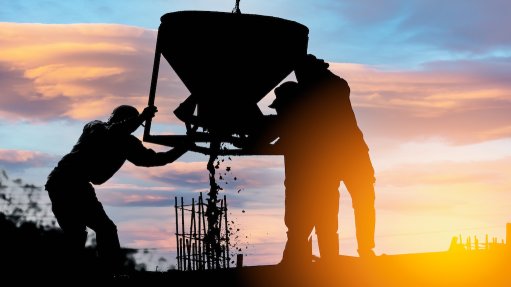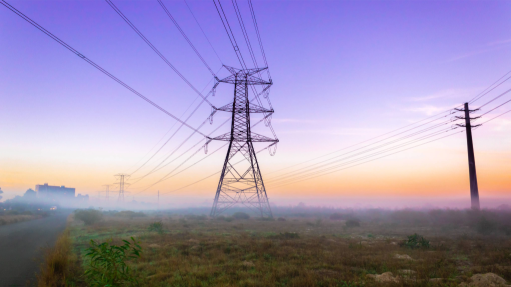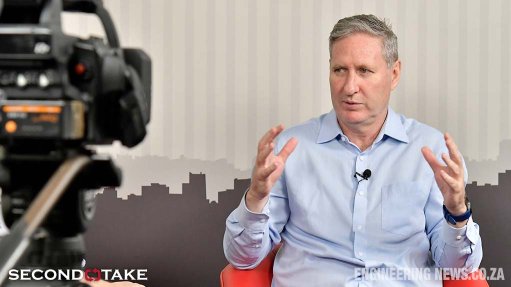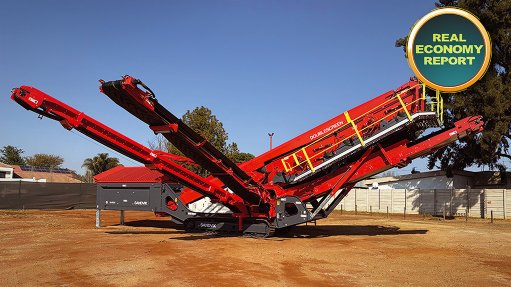Why the Koeberg nuclear power station was built
A lot of people are very much against South Africa building another nuclear power station. Many hope that the first project that President Cyril Ramaphosa throws under the bus will be a new nuclear power station.
It is a sensitive topic.
I have written elsewhere that the reason why the Koeberg nuclear power plant was built (the engineering reason, rather than anything more sinister) was to keep the Cape’s power system stable, since the major load is at the end of a long trans- mission line.
John Bewsey sent me an email, asking me to explain how come long power lines can become unstable. This is not easy to do in a way in which nonelectrical engineers can understand. Here goes. We all know what power lines are – those big towers with wires or conductors. Only high- voltage power lines (132 kV and above) have voltage stability issues; lower-voltage lines are relatively short (generally less than 200 km).
By ‘stability’ we mean the power line and associated system are designed to deliver current to the load while keeping voltage levels within specific limits. The first stability issue is the voltage dropping from the transmission end to the receiving end of the power line. Generally, the maximum allowable drop in voltage is limited to between 5% and 10% of the transmission end bus voltage. The power flow (in MVA or MW) that corresponds to the maximum allowable decrease in voltage magnitude is called the line voltage drop limit.
It is possible to raise the receiving-end voltage by fitting devices that store energy – called capacitors. This can cause power line voltage instability. Assume that the power line has capacitors connected and is supplying a load which is such that, if the capacitors are disconnected, the voltage drop will exceed 10%. Then, if the capacitors fail and disconnect, the line receiving voltage will fall below 10%.
For some loads, such as those dominated by motors, this will cause the current drawn by the load to increase, which will cause a further voltage drop. This, in turn, will cause an increase in current and a further voltage drop and so on, until the line circuit breakers trip on overcurrent or undervoltage.
The solution here is to either have a backup power line or not run the power line at a load which is such that, if the capacitors are disconnected, the voltage drop will exceed 10%. Building a backup line is always a good idea – so that the load can be supplied in the event of the first line failing.
The second stability issue is the so-called ‘surge impedance’ limit. ‘Surge impedance’ sounds like the name of the firstborn of a rock star, but it is a value obtained from the capacitance and inductance of the power line. If a power line supplies a load beyond the surge impedance limit, then a sudden loading of the power line (such as the trip of a parallel power line and consequent transfer of power demand) will cause the power line to trip. This will cause other power lines to trip on overload and the whole power system to trip.
The simplest way to avoid this happening is to have a power station at the receiving end of the line so as to keep all line loads within limits. The power station has to be reliable. In the Western Cape, there is no coal and no hydropower; thus, the only power station that fits the bill is nuclear fuelled. And that is it.
Comments
Press Office
Announcements
What's On
Subscribe to improve your user experience...
Option 1 (equivalent of R125 a month):
Receive a weekly copy of Creamer Media's Engineering News & Mining Weekly magazine
(print copy for those in South Africa and e-magazine for those outside of South Africa)
Receive daily email newsletters
Access to full search results
Access archive of magazine back copies
Access to Projects in Progress
Access to ONE Research Report of your choice in PDF format
Option 2 (equivalent of R375 a month):
All benefits from Option 1
PLUS
Access to Creamer Media's Research Channel Africa for ALL Research Reports, in PDF format, on various industrial and mining sectors
including Electricity; Water; Energy Transition; Hydrogen; Roads, Rail and Ports; Coal; Gold; Platinum; Battery Metals; etc.
Already a subscriber?
Forgotten your password?
Receive weekly copy of Creamer Media's Engineering News & Mining Weekly magazine (print copy for those in South Africa and e-magazine for those outside of South Africa)
➕
Recieve daily email newsletters
➕
Access to full search results
➕
Access archive of magazine back copies
➕
Access to Projects in Progress
➕
Access to ONE Research Report of your choice in PDF format
RESEARCH CHANNEL AFRICA
R4500 (equivalent of R375 a month)
SUBSCRIBEAll benefits from Option 1
➕
Access to Creamer Media's Research Channel Africa for ALL Research Reports on various industrial and mining sectors, in PDF format, including on:
Electricity
➕
Water
➕
Energy Transition
➕
Hydrogen
➕
Roads, Rail and Ports
➕
Coal
➕
Gold
➕
Platinum
➕
Battery Metals
➕
etc.
Receive all benefits from Option 1 or Option 2 delivered to numerous people at your company
➕
Multiple User names and Passwords for simultaneous log-ins
➕
Intranet integration access to all in your organisation
















